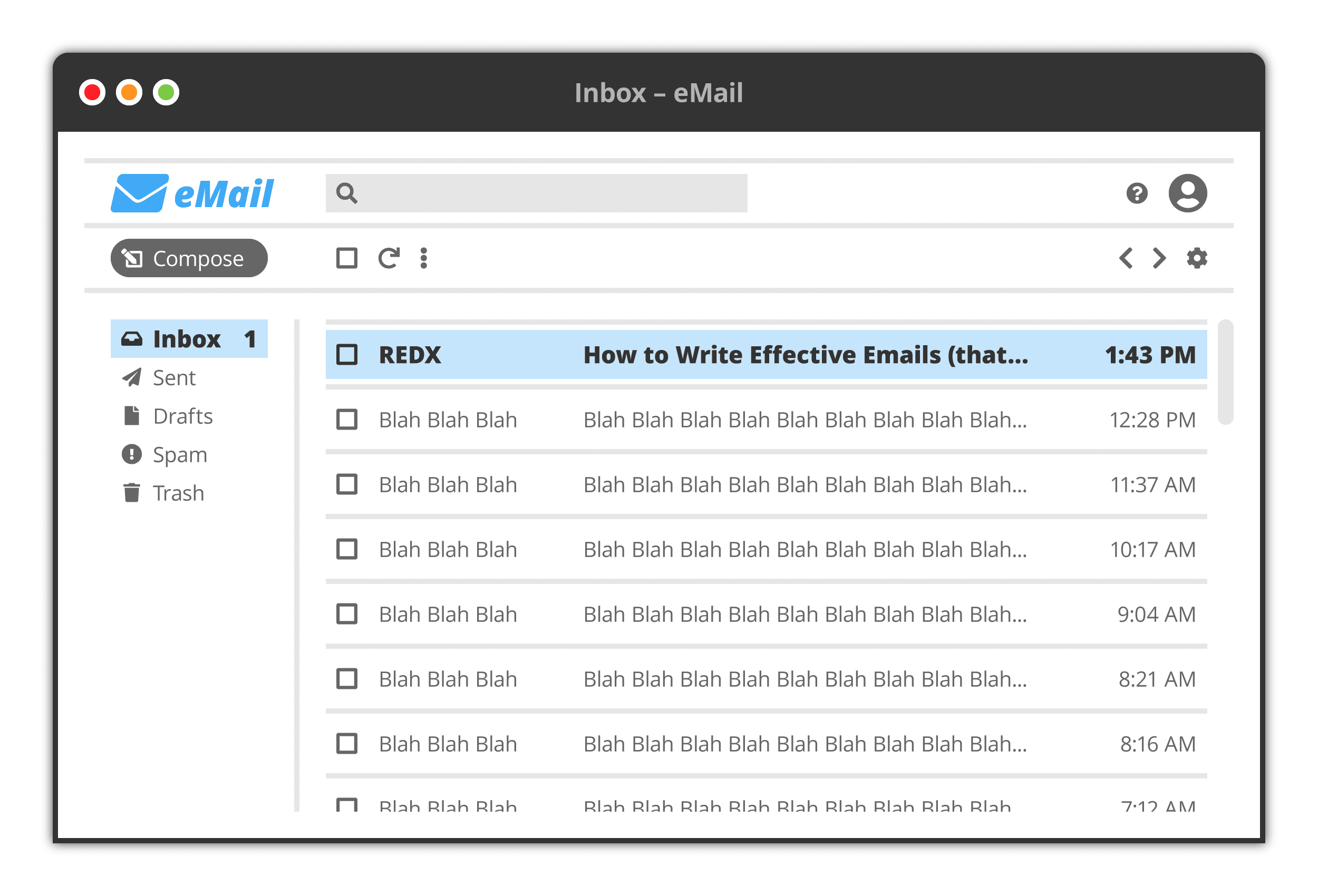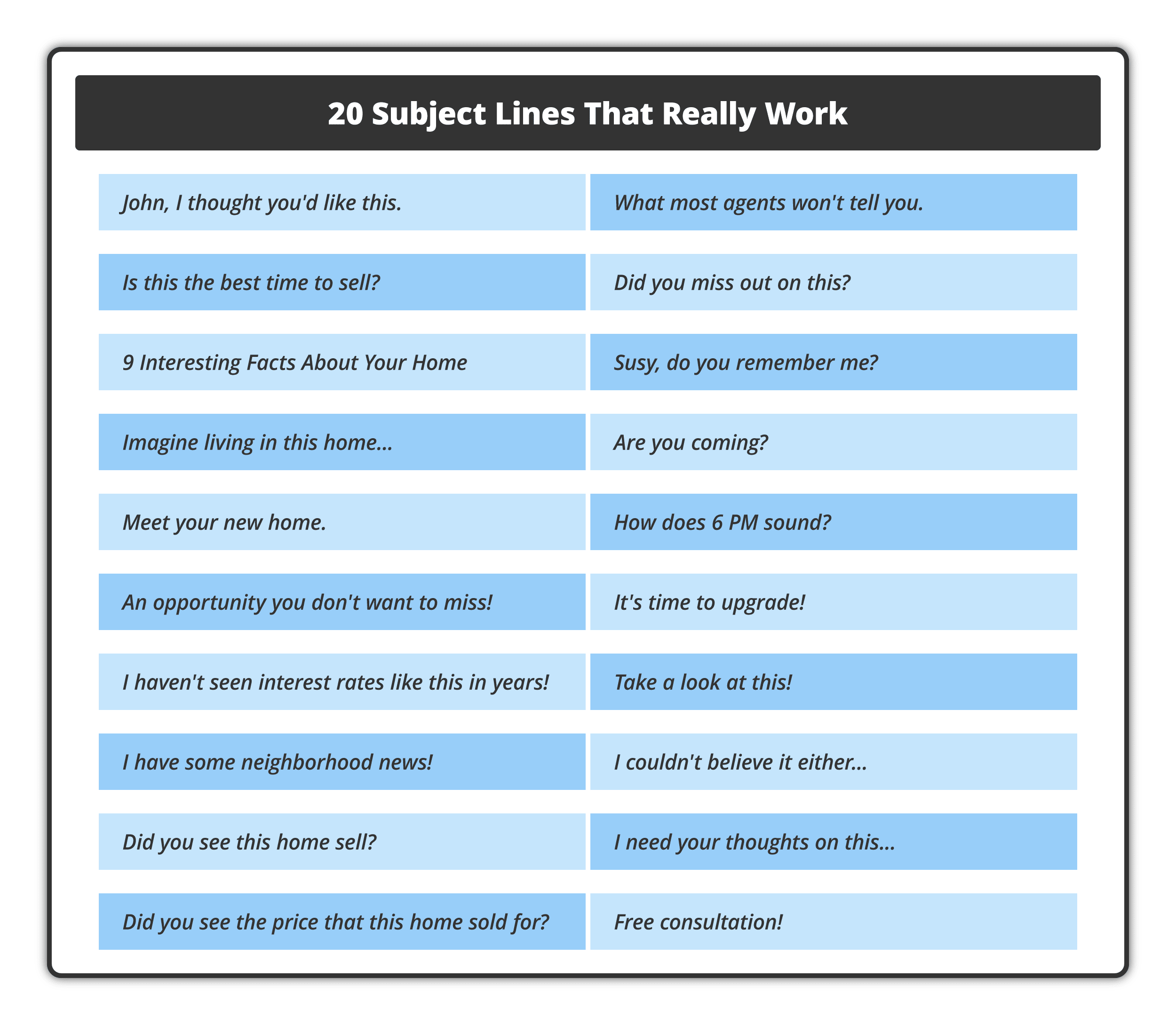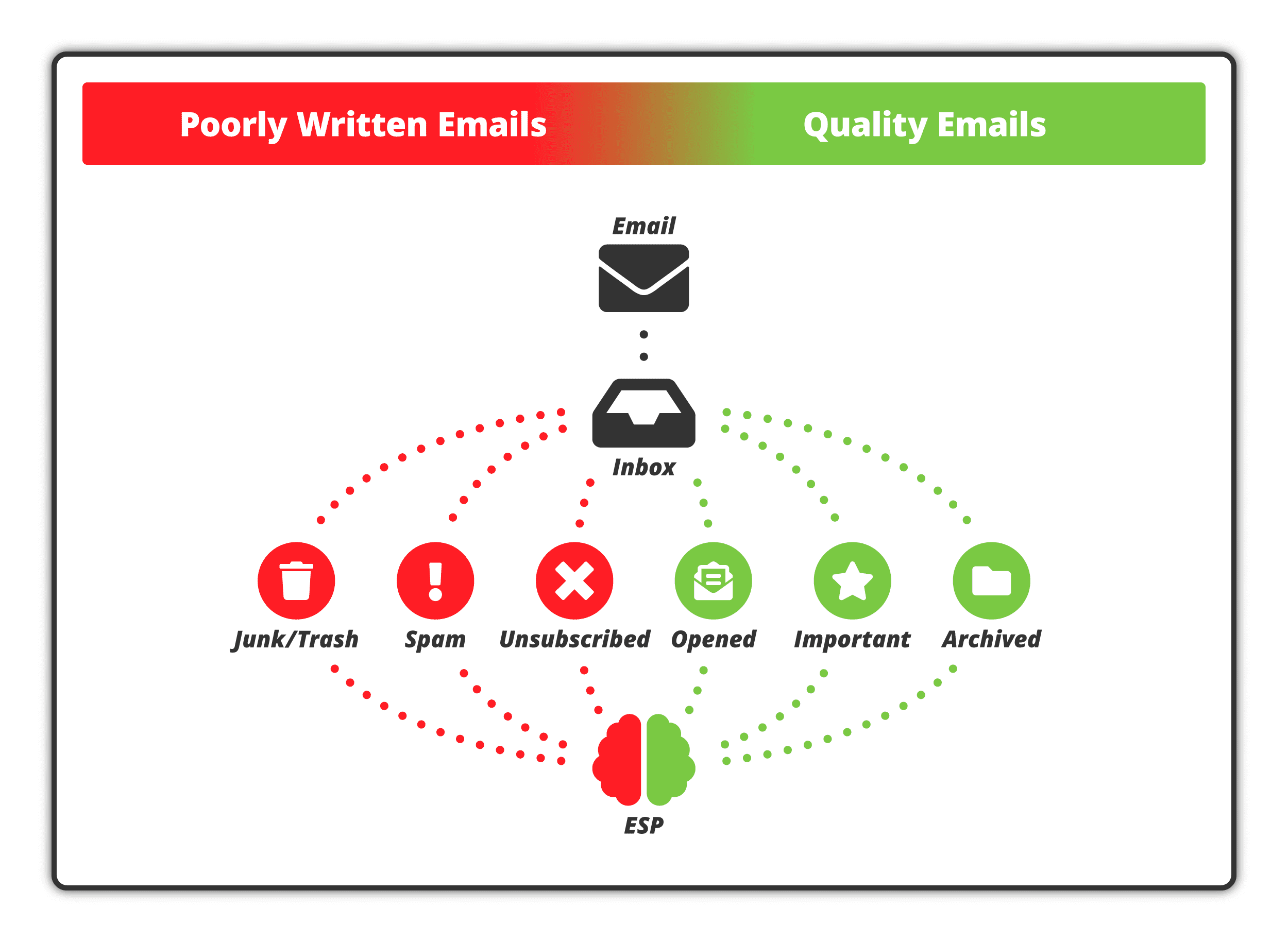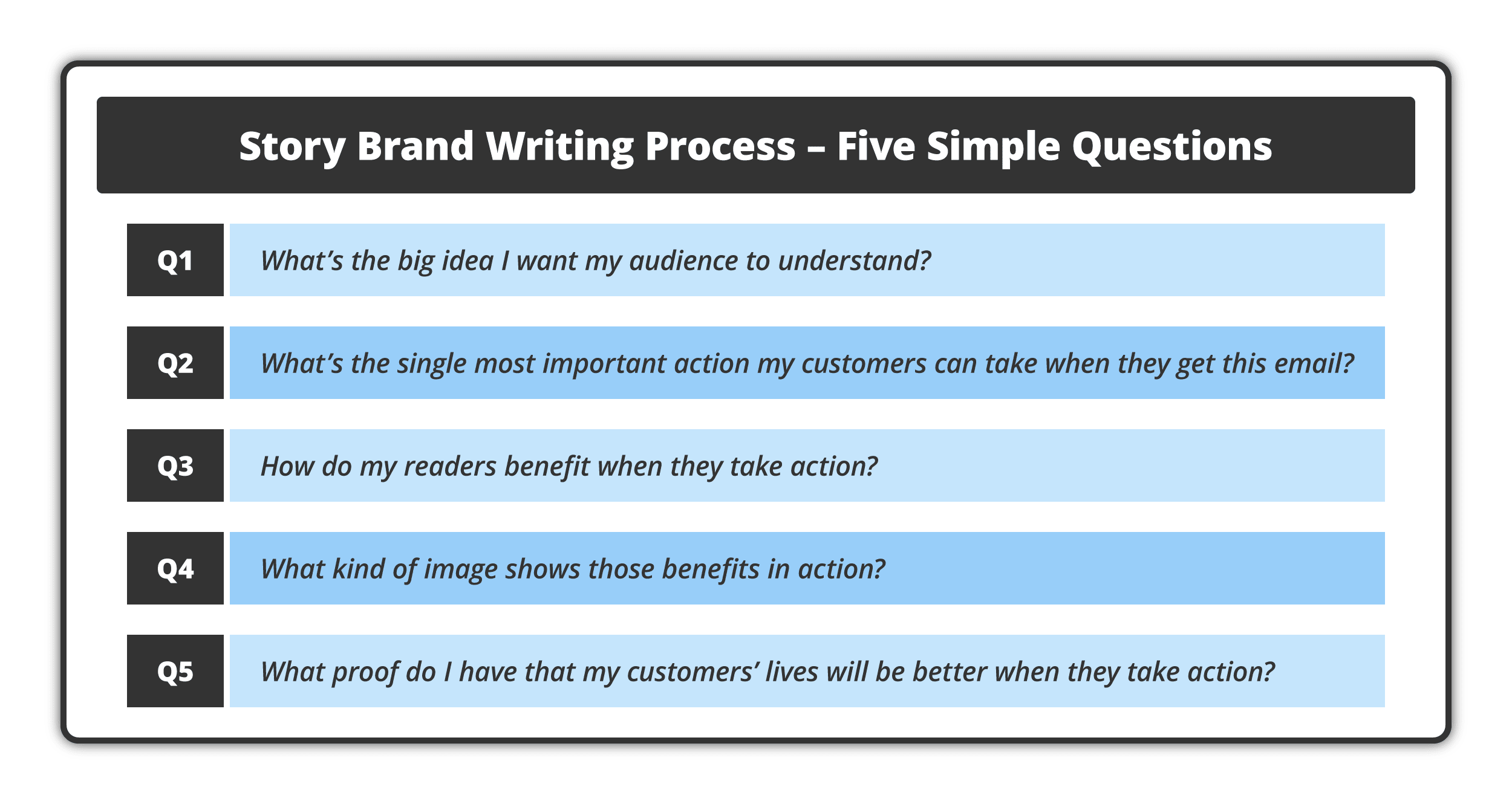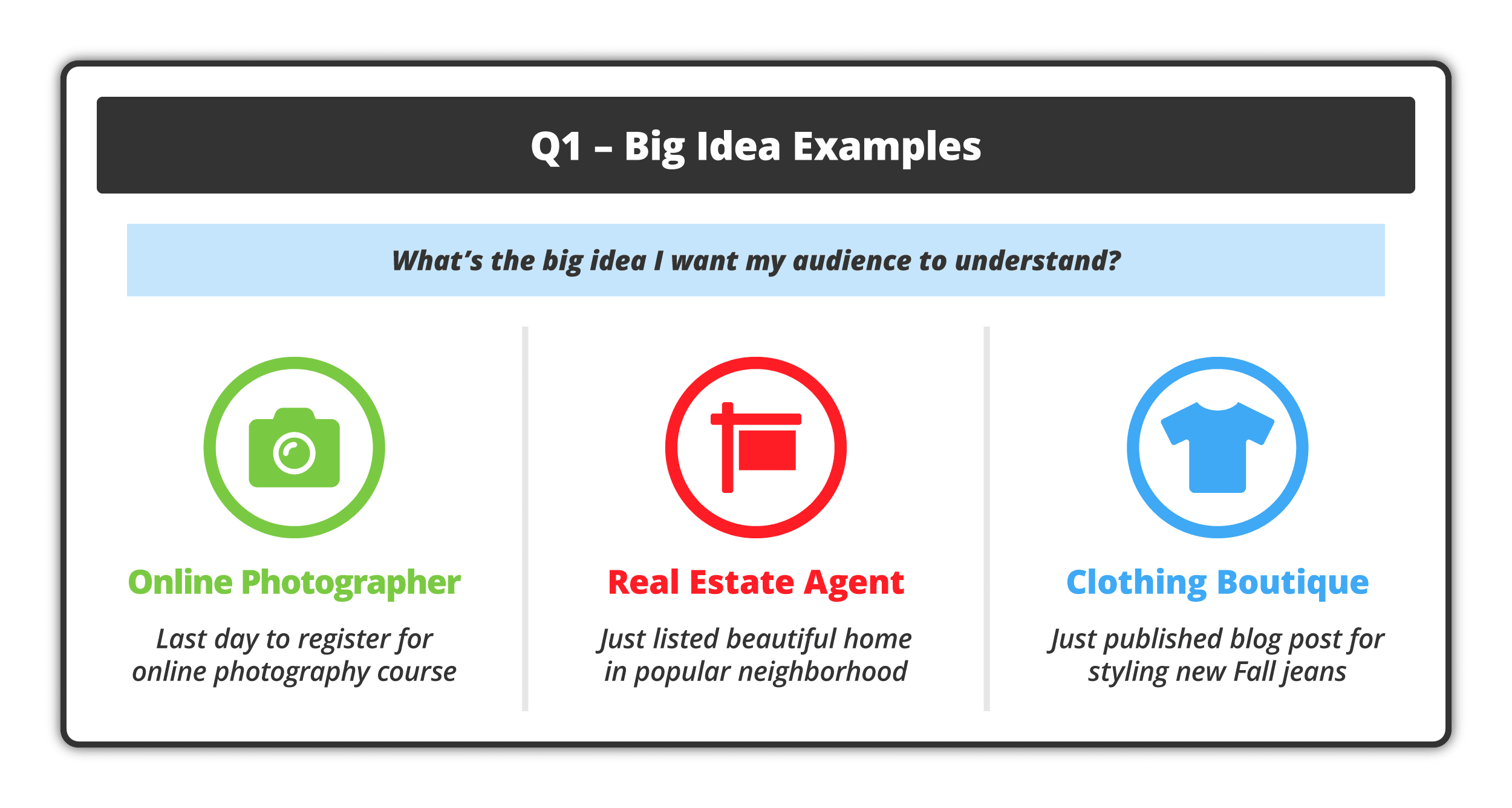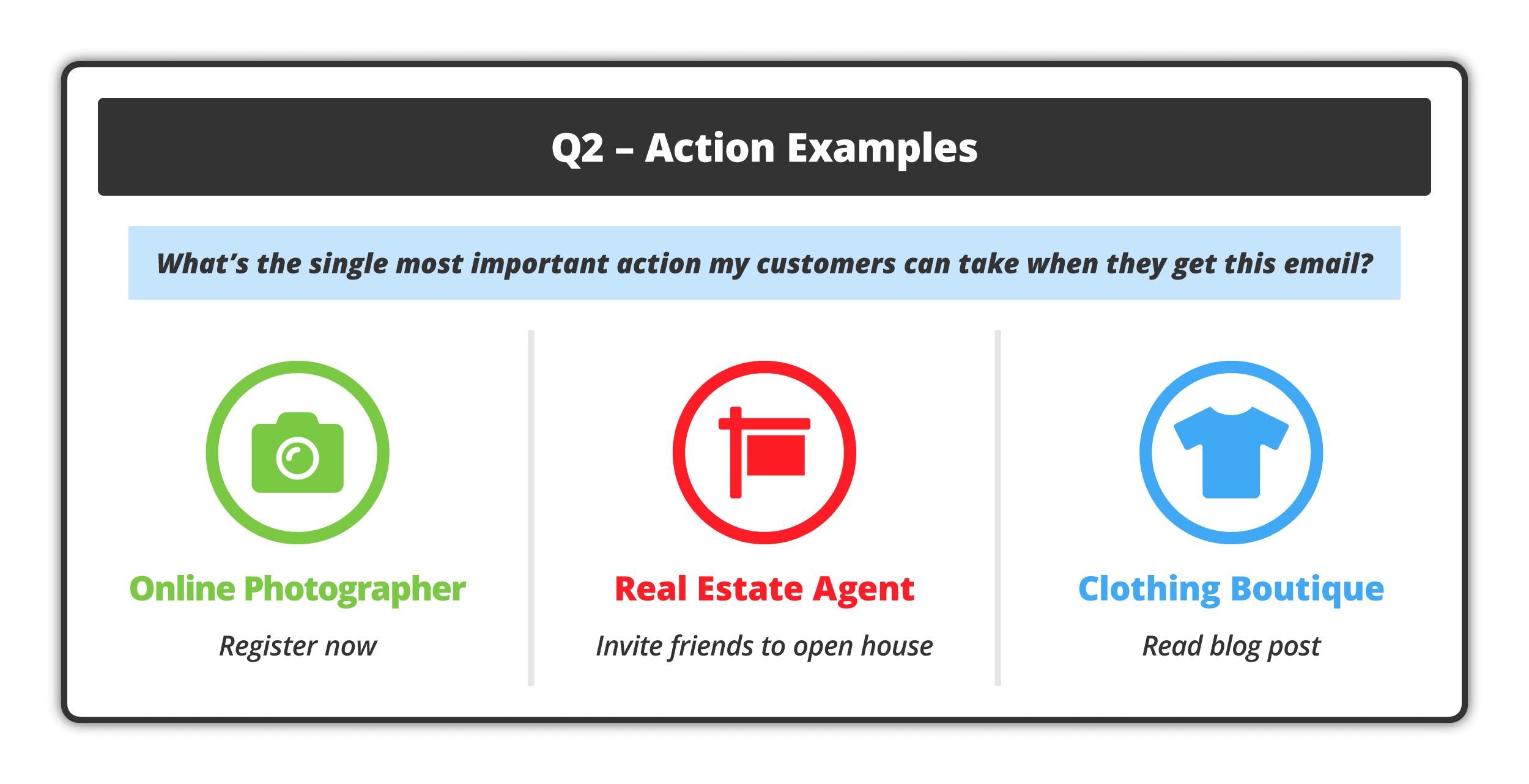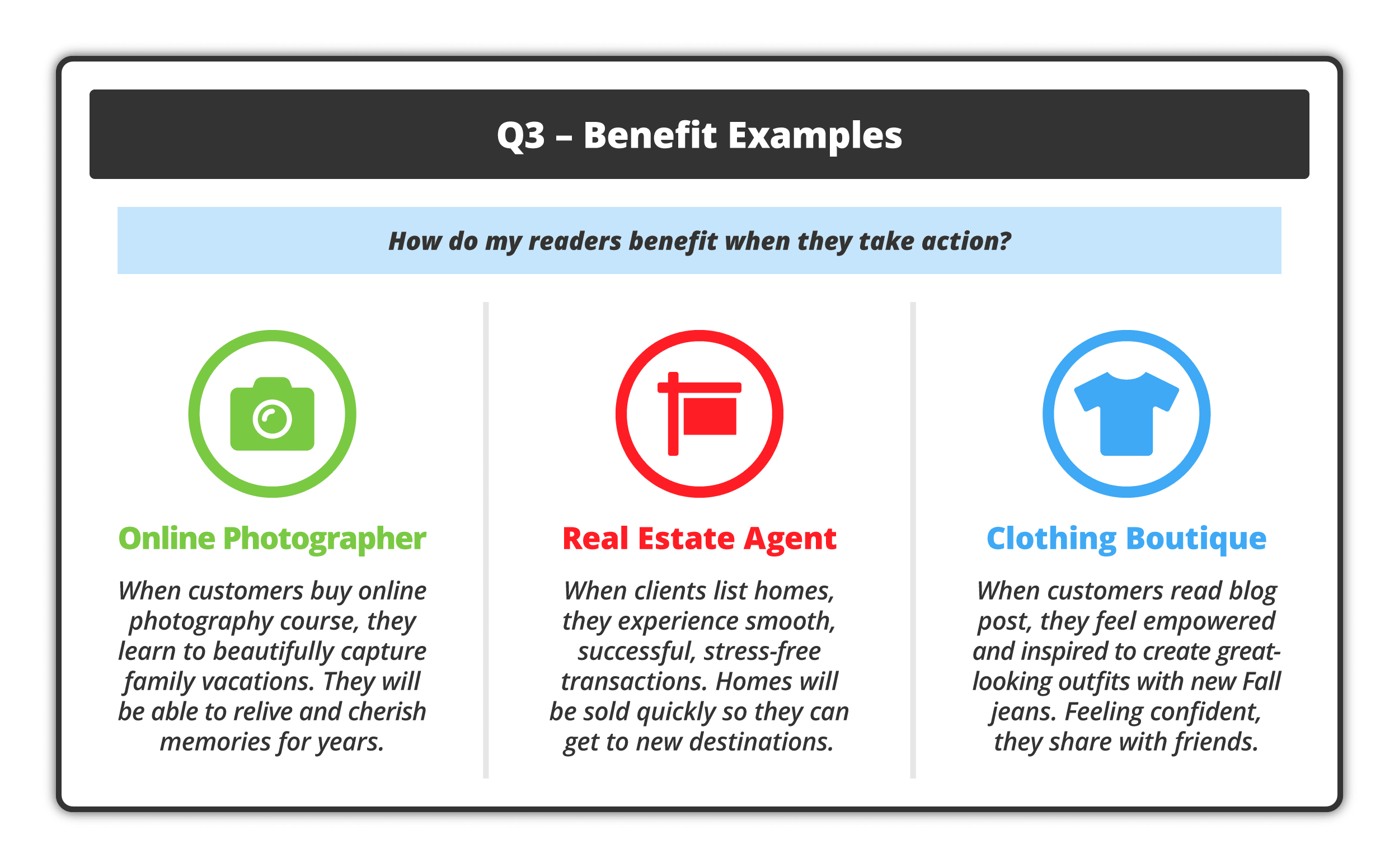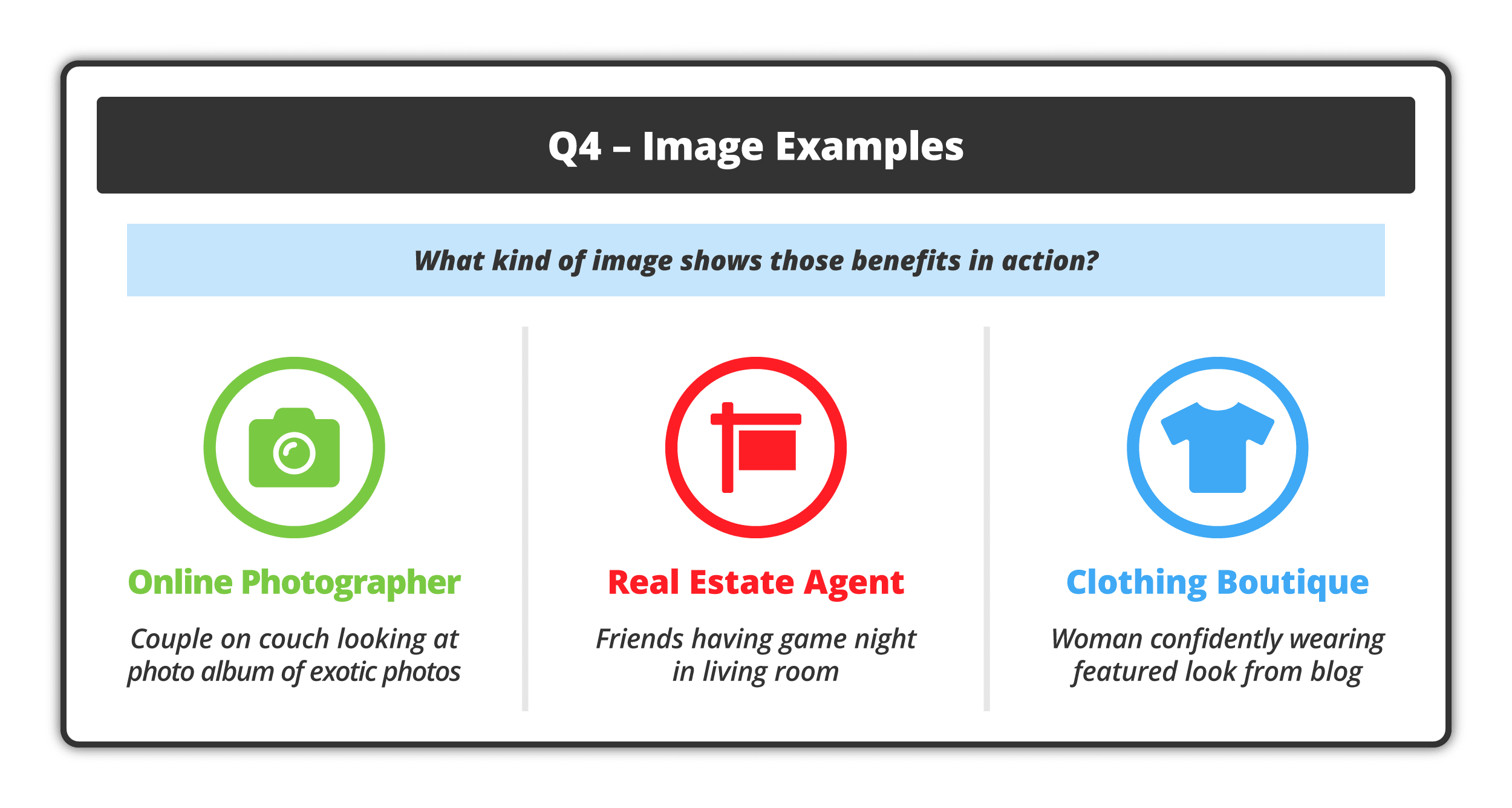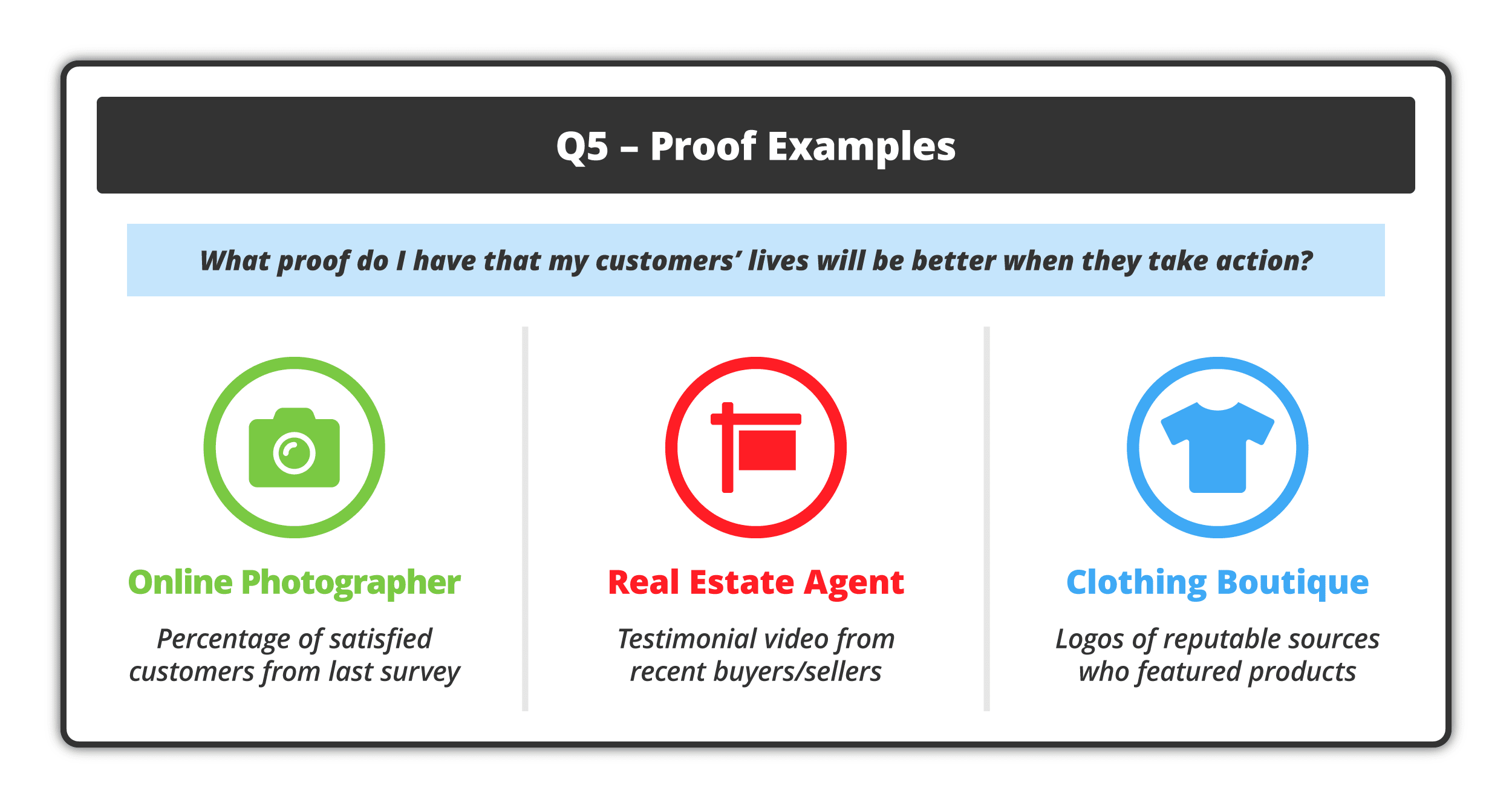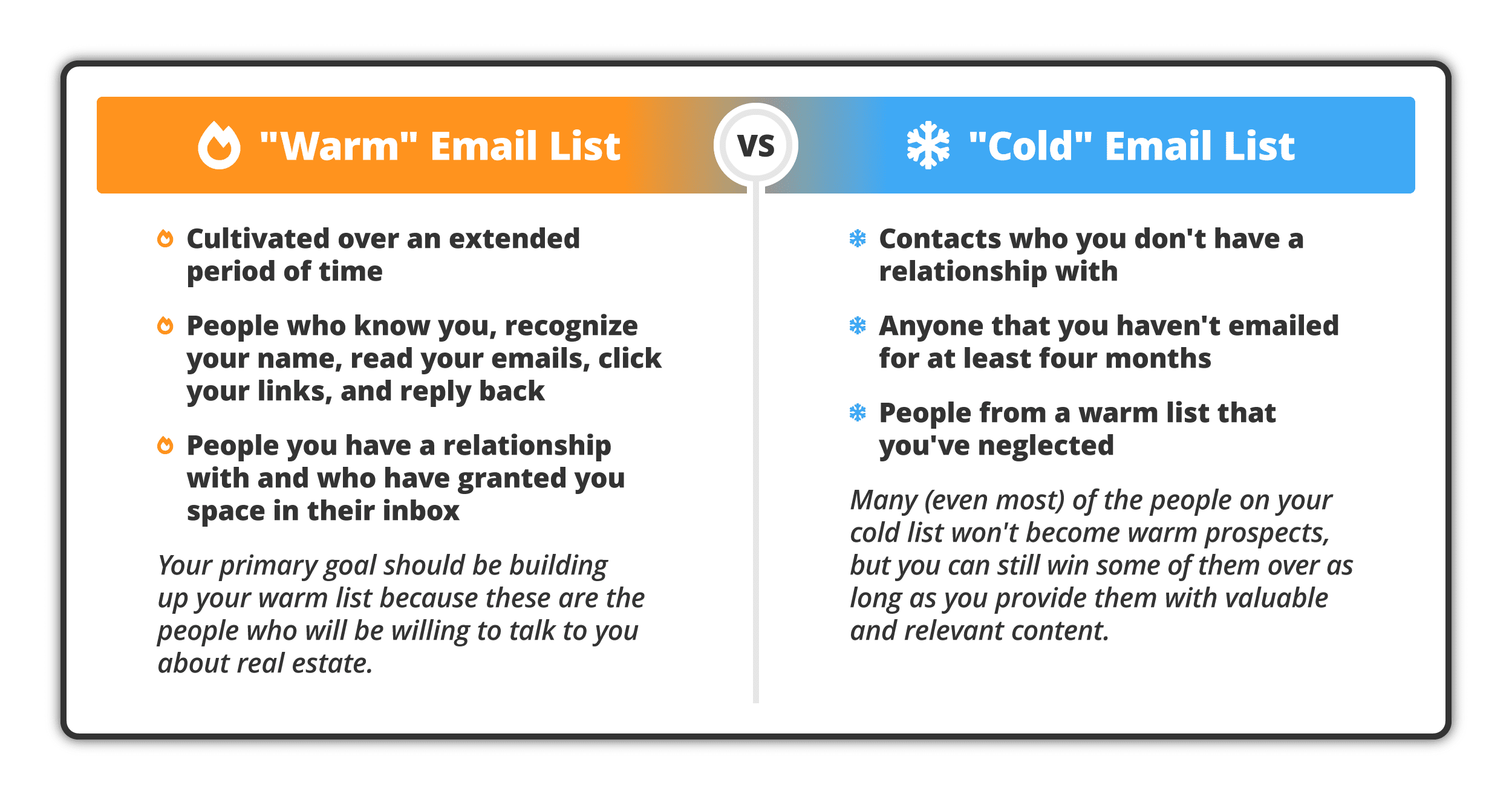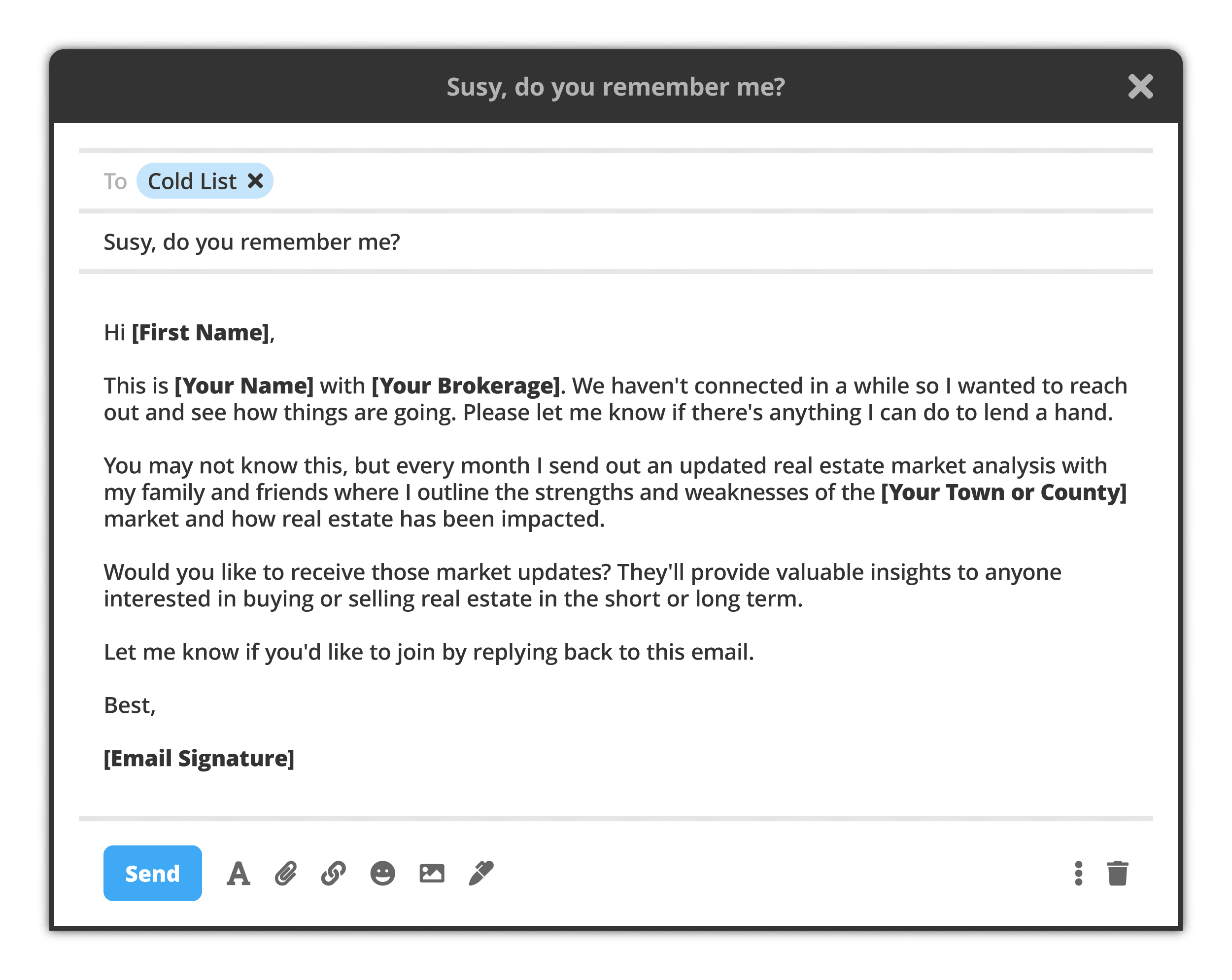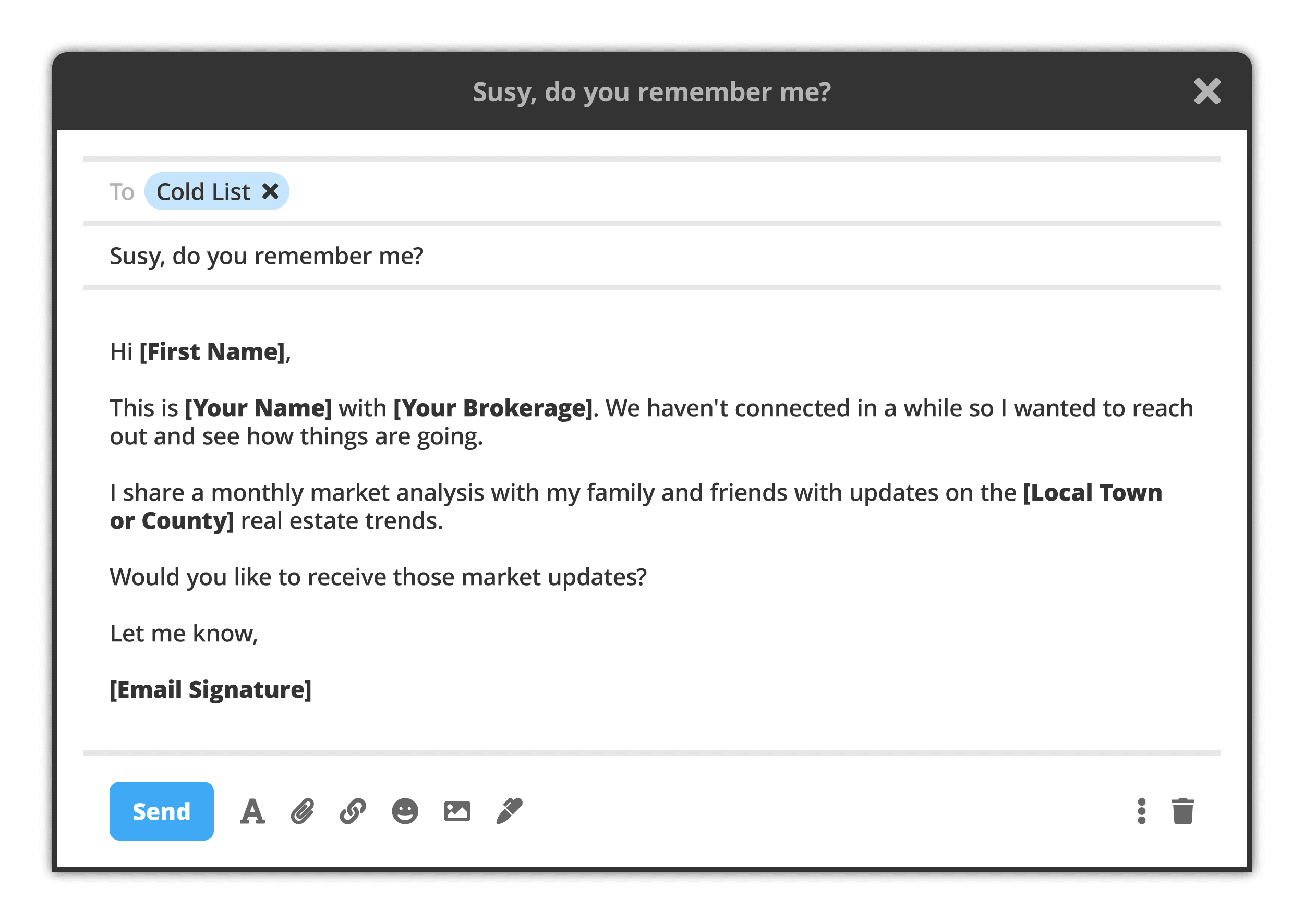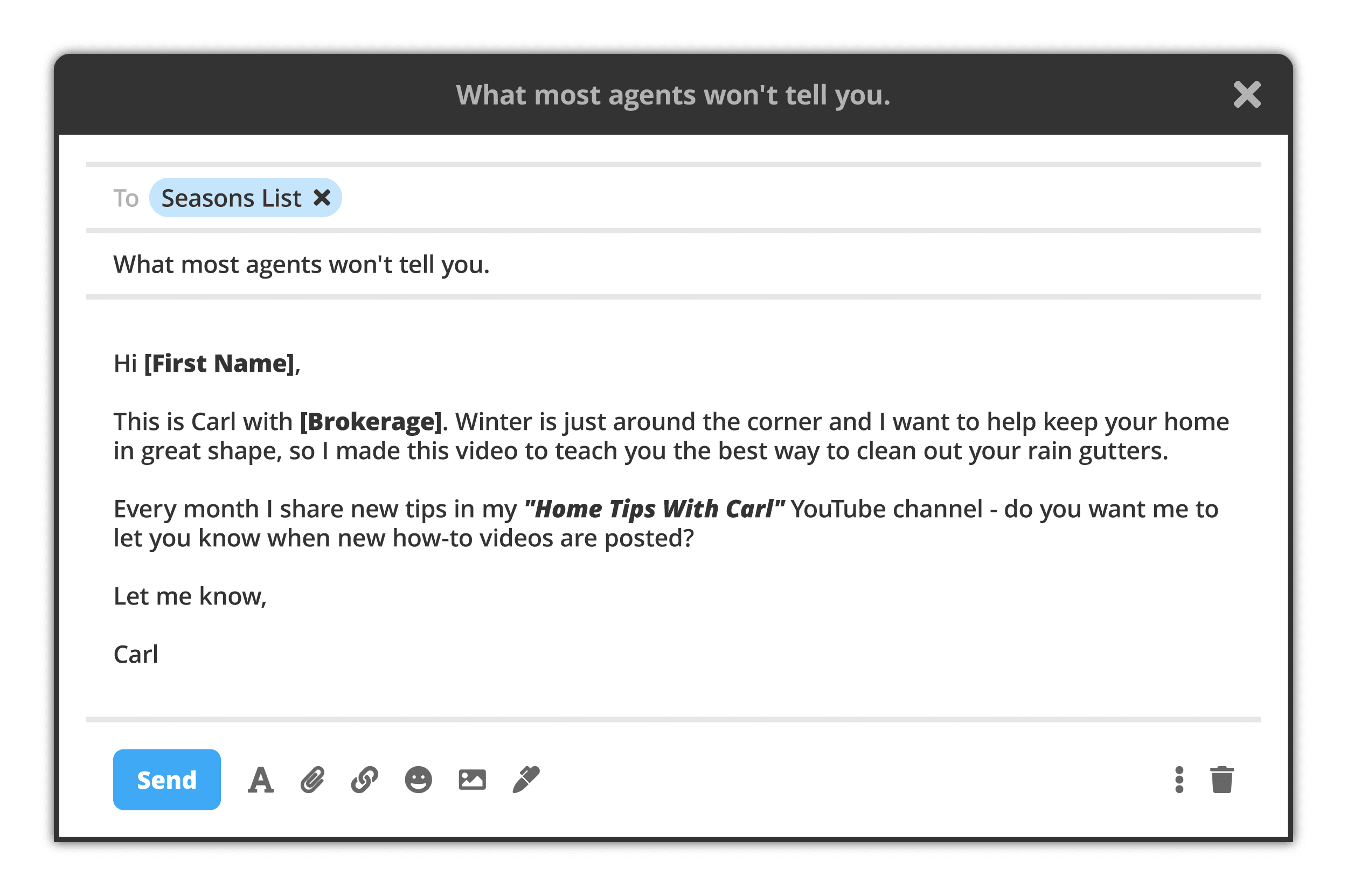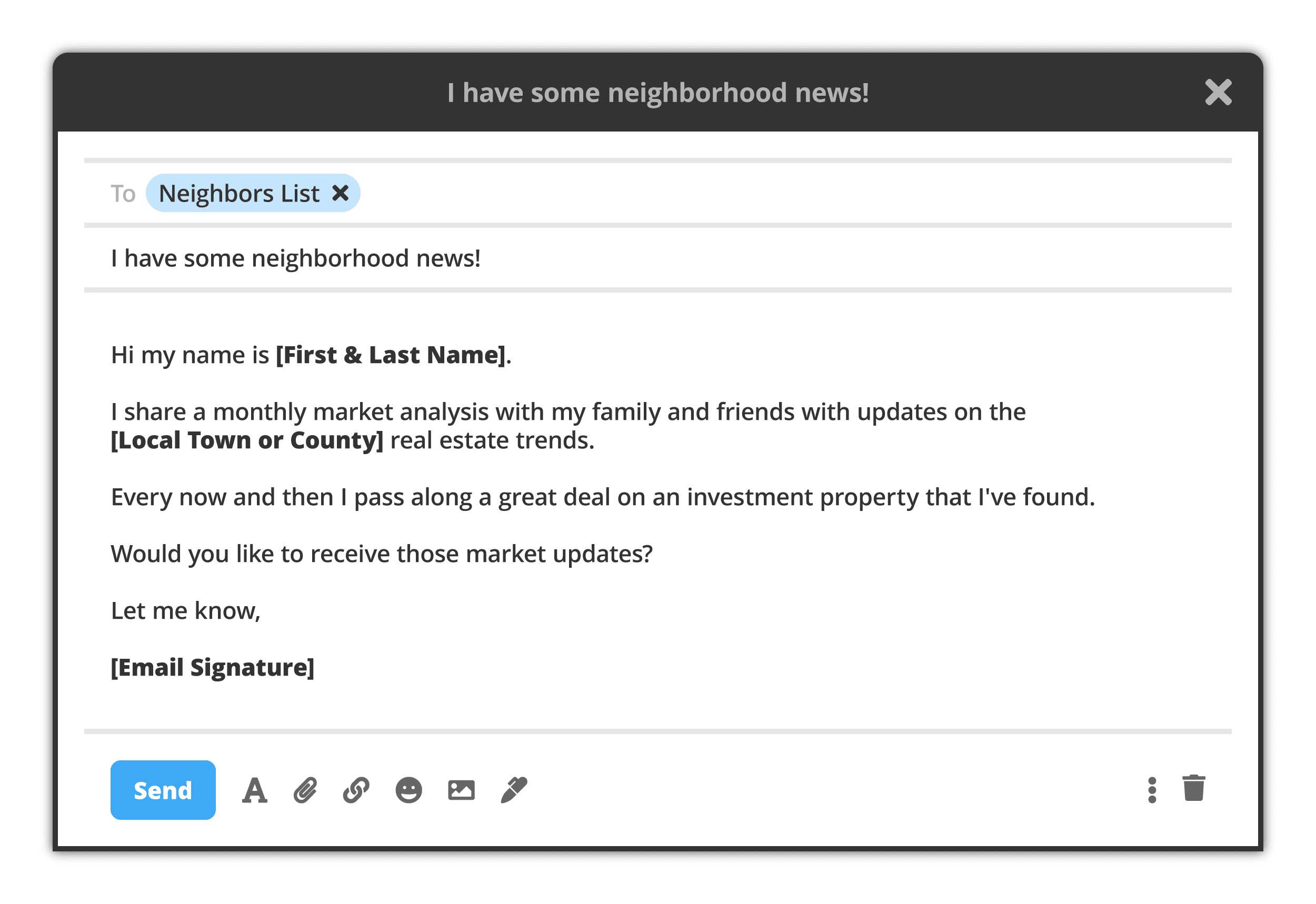Successful email marketing is the topic of countless books, podcasts, and online training courses. Real estate agents who fail to write compelling, valuable emails run the risk of spam complaints that can shut down their email account. To avoid this, it’s important to write emails that people will open, read, and actually take action on. This blog dives into technical tactics and writing strategies that will help your emails get past spam filters and into inboxes.
How to Write Effective Emails that Homeowners Will Actually Open
#1. The Importance of “From”
#2. Start with Your Value
#3. Write Engaging Subject Lines
#4. Understanding Email Principles
FREE BONUS: 21 Email Templates for Agents
#5. Get Homeowners to Respond
#6. Passing Through Spam Filters
#7. Maintain Your Email Lists
#8. Three Ways to “Warm Up” a Cold List
#1. The Importance of “From”
We all receive an average of 121 emails a day, and only open about 19% of emails we get from real estate agents. If your emails don’t stand out from other agents, you risk falling into the “other 81%.” One way to stand out is by building quality relationships with the people on your contact lists.
When you build relationships with your contacts, the “from” line becomes more important than the “subject” line. Consistently delivering high-quality, valuable content means people will watch for (and look forward to) your emails. Why? Because they come from you.
How can you write emails that stand out from other agents? Through valuable, intentional content that will actually help homeowners.
#2. Start with Your Value
If the value of an email is unclear, the reader will be too. Whenever you write an email, ask yourself, “What value am I providing to homeowners?” Since their trash bin is just a click away, make sure to articulate your value quickly and clearly.
If you want a response, ask questions that will make the reader curious. If you want to start a conversation, ask questions that spark similarities between you and the reader.
Whatever your desired result is, every line of your emails should indicate what’s in it for them and the value you’re offering. Otherwise, homeowners won’t care what you have to say.
#3. How to Write Engaging Subject Lines
Which subject line are you more likely to open? “John Smith Realty” or “Interest rates are lower than ever!” The content of your subject line will drastically affect your open rates. If you don’t catch their attention right away, people are less likely to read the rest of your email.
Here are a few pointers on how to write engaging subject lines:
Share the, “What’s in it for me” as simply as you can.
Make it easy for people to process so they can recognize value while they quickly scan their inbox.
Keep it tight.
Most inboxes preview about 60 characters of the subject line (only 25 to 30 on mobile). Put the most important information at the beginning so it doesn’t get cut off.
Stay simple and focused.
Focus on one action. Offer one takeaway, indicate how the reader can make use of it, and specify how you will deliver it.
Ask them to respond.
If someone knows that they need to respond, they’re more likely to open it in the first place. Make this clear in the subject line by writing “please reply” or “thoughts needed on X topic.” Setting deadlines like, “Reply by X date” also increases the odds that they will respond.
Borrow authority.
If you’re emailing a referral, use their name in the beginning of the subject line to grab the reader’s attention.
Personalize the subject line.
Generally, you’ll know the name of the person you’re emailing – so use it! Include their name (or any information relevant to them) in the subject line and you can almost guarantee that they’ll notice it. For example, you could write, “Upgrade your [city name] house for 25% less,” or “[first name], see how your mortgage compares to the [city name] average.”
Re-read the subject line before you send an email.
When you send multiple people the same (or similar) emails, you run the risk of copy-and-paste errors. Remember to tailor it to each reader if possible.
Don’t use “ALL CAPS.”
You might get someone’s attention, but it’s the wrong kind of attention. ALL CAPS is the digital equivalent of yelling. Unless you’re trying to irritate someone or give them anxiety, lay off the caps locks and avoid exclamation points.
#4. Understanding Email Principles
Sending a bad email is worse for your campaign than not sending one at all. Poor emails that lack value often don’t even make it to the inbox and are likely to be marked as “spam.”
Email service providers (ESPs) have become smarter when it comes to what recipients want to receive in their inbox. They dig into the data behind every email you send to calculate how much engagement each one receives. They use opens, clicks, replies, spam/junk filters, complaints, and unsubscribes to determine if your email will make it to the inbox.
Google, Yahoo, and other major ESPs frequently update their algorithms to improve the user experience of their email platforms. As marketers, we’re always going to be behind the curve as we work to adapt to new ESP algorithms. But don’t worry… there’s still hope!
Use the tactics and principles in the next two sections to earn a positive email reputation for your business.
FREE BONUS: 21 Email Templates to Grow and Engage Your Database
#5. Get Homeowners to Respond
Many writers feel anxious when they sit down to write an email. But it doesn’t have to be that way! In fact, for people who’ve mastered asking a few simple questions, writing great emails comes naturally.
Donald Miller, author of Story Brand, breaks down the writing process into five simple questions. Answer these questions when it’s time to write an email, and you’ll find the kind of focus you need to clear your mind and craft an engaging message.
Question 1. What’s the big idea I want my audience to understand?
Focus is not only critical in great books and movies, but in emails too. Your subscribers live in a world driven by the constant distraction of social media advertising. Since your email lives among thousands of other online impressions, even a single moment of confusion or unclarity could cause your message to be overlooked.
If you’re only going to answer one question from Miller’s list, make sure it’s this one. Reflect on why you’re sending the email and focus your purpose on one big idea. When you do, your emails will be clearer, shorter, and more meaningful.
Question 2. What’s the single most important action my customers can take when they get this email?
Whether you want your reader to buy, register, sign up, schedule, order, or call… they need a clear path to help solve their problem.
For example, if you’re hosting virtual open houses, the most important action they can take is to register.
You’ll be amazed how many readers will follow a path simply because it’s been clearly marked, and you’ve asked them to take it.
Question 3. How do my readers benefit when they take action? (aka “What’s in it for me?”)
Everyone who opens your email is looking to answer one question: “What’s in it for me?”
In the back of their minds, your readers are asking, “How does this benefit me and improve my life?”
Therefore your email needs to clearly address this question. What great things will happen to your reader if they take action? Will they avoid something negative? Will it improve their life? Are there any risks connected to not taking action?
To do this well, you need to understand your audience – what they want, what they fear, and their hopes and struggles. Once this is clear, you can help address their actual needs. Answering the, “What’s in it for me?” will also help you craft the experience that your email is driving them to.
Question 4. What kind of image shows those benefits in action?
Neuroscientists at MIT discovered that it only takes 13 milliseconds for our brains to identify an image (that’s 60,000 times faster than text).
What you see in a split-second influences what your brain wants to do next. Mary Potter, the study’s lead scientist, elaborated on this:
“The job of the eyes is not only to get the information into the brain, but to allow the brain to think about it rapidly enough to know what you should look at next.”
A powerful, carefully chosen image can persuade customers to stop scrolling and actually read what you have to say.
Find images that instantly communicate the benefits spelled out in your copy. You’ll snag the attention of your readers and draw them into the rest of your email.
Question 5. What proof do I have that my customers’ lives will be better when they take action?
You can answer every other question on this list perfectly, but people still won’t do what you ask them to unless they trust you. One of the easiest ways to gain trust is by pointing to someone outside your business who can vouch for you (social proof).
Point customers to past clients who’ve received the promised benefits of your hard work. Don’t include this in every email (to avoid coming across as arrogant), but if your audience is cold or if you’re selling something, it will help.
Using these five questions, you’ll be able to craft a clear, compelling message that cuts through the rest of the inbox clutter.
#6. Passing Through Spam Filters
As long as you follow “the rules” laid out by ESP’s, you can prevent your email account from being shut down.
When people engage with your emails in positive ways (opens, clicks, replies, adding you to their address book, moving you to the inbox), ESPs reward you with better deliverability. That being said, they’ll also punish you if your emails receive negative engagement (deleting an email without opening it, moving it to a junk folder, marking it as spam, etc.)
One of the worst things that can happen to one of your emails is having it marked as “spam.” If you have a high enough ratio of sent emails marked as spam, your ESP will likely deactivate or shut down your account.
To keep your emails moving past spam filters on a clear path to the inbox, follow these basic email marketing rules:
1. Maintain a high-quality (warm) email list and send good content.
• See the next two sections for tips on “warm” lists
2. Avoid formatting that flags your email as spam.
A few examples are:
• A wide variety of font sizes, styles, and colors
• All caps throughout the email
• Hyperlinks to too many different domains
• Too many exclamation points in the subject line
• Spammy words in the subject line (click here for a list of “spam trigger words”)
• Symbols and numbers to help spell words
• Including too many large images
3. Use a valid source to send emails
• Don’t use a third party email sender to send emails from an account that you don’t own
• Use consistent “from” and “reply to” addresses
4. Make it easy for recipients to unsubscribe.
• If they can’t easily see a way to unsubscribe, they’re more likely to mark the email as spam (which will hurt your email reputation with ESPs.)
• Place an “unsubscribe” link at the bottom of all emails.
• If you don’t know how to place an unsubscribe link, learn how right here!
• If you can’t figure out “unsubscribe” links, add a P.S. to your emails saying “If you don’t want to receive emails from me, please reply back and ask to be removed from my mailing list.”
#7. Maintain Your Email Lists
It’s important to know the difference between your “warm” email list and your “cold” email list.
A “warm” email list has been cultivated over an extended period of time. It’s made up of people who know you, recognize your name, read your emails, click your links, and reply back. These are people you have a relationship with and who have granted you space in their inbox.
If you’re going to send emails, your primary goal should be building up your warm list because these are the people who will be willing to talk to you about real estate.
A “cold” list contains anyone that you haven’t emailed for at least four months. These could be people from a warm list that you’ve neglected, or contacts you’ve put on your list who you don’t have a relationship with.
However, cold lists don’t have to stay that way. Many (even most) of the people on your cold list won’t become warm prospects, but you can still win some of them over as long as you provide them with valuable and relevant content.
#8. Three Ways to “Warm Up” a Cold List
1. Reignite an Old Flame
If you’ve already had a relationship with the cold contact in the past, warming them up is pretty simple. Remind them who you are, why they’re on your list, and what value you can provide them. Here are a few examples of what you could send:
Here’s an even simpler version:
You can also mention other services you provide. For example, Carl Spencer in the Salt Lake City, Utah market hosts an entertaining and educational Facebook channel called, “Home Tips With Carl” where he teaches simple tips to keep your home in great shape. An email from him to his cold list could look like this:
2. Host “Fire” Events
You can also re-engage a cold email list by hosting an event. Consider what type of event you could host to deliver massive value and immediately remind homeowners why they want to receive emails from you.
Here are a few ideas:
• Invite subscribers to a live online event or webinar where you provide exclusive training or answer questions.
• Create and host a detailed giveaway.
• Livestream a monthly drawing for gift cards and other cool prizes.
• Create a multi-episode training or info course to nurture your list over a few weeks. Each week can explore a different element of your business or expertise.
Regardless of the event and the email:
• Make it personal
• Provide value
• Follow general email best practices
• Include a call to action (CTA)
• Go all out. Don’t hold back. Make your re-engagement offer so interesting that it energizes the people on your list.
3. Break the Ice for your Oldest, Coldest Lists
This third warm-up strategy is for people or lists you’ve never emailed before. Be very careful with what you send. People on these lists are more likely to mark your email as spam, which increases your chances of getting shut down.
Approach your “ice-cold” list(s) as if you were in an elevator with a total stranger. You wouldn’t approach them and immediately ask if you could come over and list their house. They know nothing about you. A better approach is to take 30 seconds to introduce yourself, provide value, and make a good impression before they get off on their floor.
An email following those guidelines could look like this:
If they don’t respond to that email, follow up 3-5 days later and ask the same question, but also provide a sample market analysis as an attachment or hyperlink.
Sending emails that are succinct and valuable, without asking for something in return, will help you develop a positive email relationship with extra cold lists.
Now You’re Ready to Send Valuable Emails!
Now that you know the importance of safe email marketing, the risks associated with it, and how to increase engagement, you’re ready to send high-quality emails to your lists! Not only do you know how to write compelling emails, but you know how to set yourself apart from agents who typically get marked as “spam.” Use these tips to increase your email engagement and find yourself on the path to more relationships, leads, and listings!
About REDX
REDX is an all-in-one lead data and prospecting platform that helps agents connect with qualified buyers and sellers. The platform includes seller leads, a dialer with up to three lines, social media tools, and a lead management system that simplifies first contact and follow up.
Click here to watch a demo, or call (800) 731-7339 ext. 1 to learn more about Expireds, FSBOs, GeoLeads, FRBOs, Pre Foreclosures, our Power Dialer and Social Media Tools for paid ads and content creation.
REDX maintains the position that all agents should be compliant with state and federal telecom laws – learn more here.
